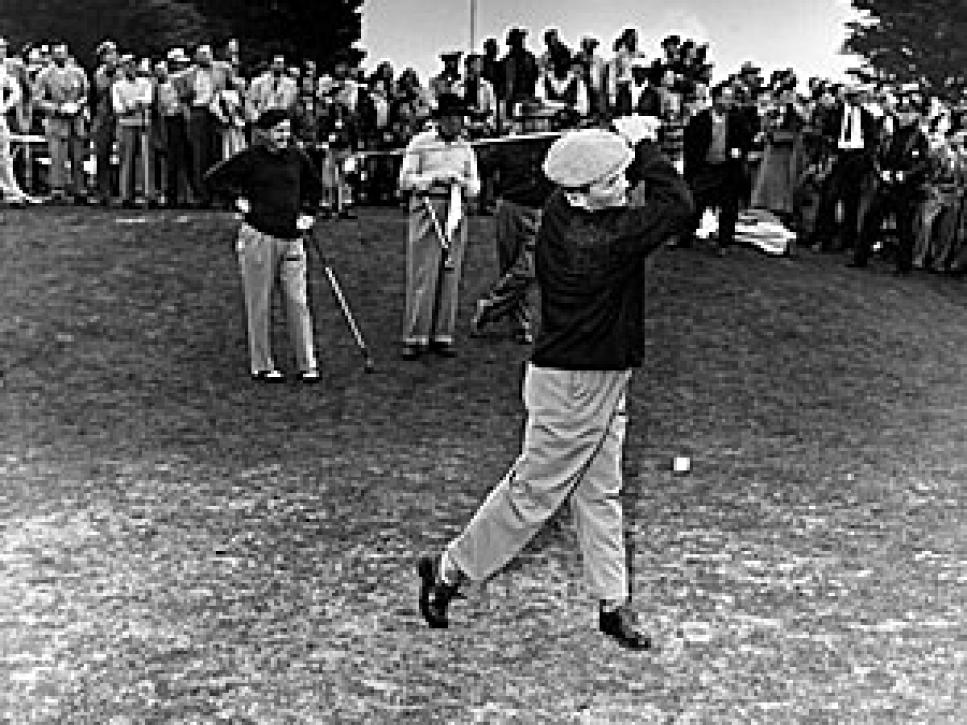News
'It'll Be The Greatest Open In History'

Bing Crosby was the longtime host of the Pebble Beach National Pro-Am.
This is going to be the greatest U.S. Open championship in history. The golf course -- Pebble Beach -- will see to that. Everyone will remember who wins this Open because of the character of the course and the glamour of the area.
The winner will be a man who can -- and probably will -- hit every type of golf shot known to man, with the exception of the kind Bob Hope hits. The champion will have distance, he'll have accuracy, he'll be one who can recover from poor shots, he'll be a great putter -- and he'll have a cool temperament under the worst kind of pressure.
I don't think the Open scores will vary too much from the ones usually turned in during my tour tournament here every winter. Since we started playing it a 72 holes in 1958, the low has been 277 (by Billy Casper, that first year) and the high 286 (by Ken Venturi in 1960 and Doug Ford in 1962).
Two general changes should cancel each other out as far as scores are concerned. The plus is that the weather will probably be beautiful. Although it was nice this year, that isn't always true for my regular tournament. The minus is that the United States Golf Ass'n has toughened the layout.
Chances of a storm are remote. The fairways will be firmer than in the winter, and the golfers will get more roll. There won't be much wind. Conditions should be ideal for the best scoring.
On the other hand, the course has been lengthened by 165 yards. The rough will be higher and the fairways narrower. There will be higher grass around the fringes of the greens, and the greens ought to be lightning fast. The greens are rather small to begin with and if you leave the fairway on par 4s, it will be next to impossible to hit the greens with the next shot.
The last 11 holes will be the test. The critical holes are the eighth, 14th and 17th and 18th. By the time the field gets to the eighth tee in each round, most of the players will be one or two under par, at least. That's the easier part of the course. From there on in, though, birdie opportunities are limited.
Consider the eighth. After a series of comparatively simple holes, here you have a 425-yard par-4 where your long second shot must clear a rough section of the beach. The green is surrounded by treacherous traps.
The 14th is a 555-yard par-5 around a dogleg to the right. Pros like to hit the greens on par-5s in two, but they'll have to hit two super shots to do it on 14.
Finally, you get to 17 and 18. The par-3 17th, 218 yards, is right into the edge of the ocean. Over and you're in jail. And 18. I don't know what I can add to what others have said about this great hole. A hook or pull puts you on the beach or in the water. Over-do a fade and you're behind the trees or in a bunker. All I know is that I get a headache just thinking about playing 18 under any kind of pressure.
My favorite to win -- and maybe everybody else's -- is Jack Nicklaus. It isn't only because he's won my tournament twice, including this year, and also the U.S. Amateur at Pebble in 1961. Jack is fond of the course's design -- it's a thinker's track, and he's one of the best strategists around. Jack also is long enough to hit the par-5s in two, which gives him a definite advantage over many in the field.
Certainly there are many other great players in the field. No one can really predict who'll win. I'm going to follow Jack at the start. If he happens to falter, then I'll pick someone else in contention. Whoever he is, I'll see him hit a lot of great shots. There's no other way anyone can win at Pebble Beach.

